Understanding the value of a clean, organized home is fundamental to creating a healthy and happy living environment. Every nook and corner of our space deserves our attention and care, which not only enhances aesthetics but also contributes to our overall well-being.
House Cleaning 101 is a comprehensive guide that walks you through the basics of maintaining a sparkling, tidy home. From general tidying up to deep cleaning specific areas, this guide covers everything you need to know to keep your house in order.
It is designed to provide practical solutions to all areas of your home, such as the kitchen, where proper hygiene is essential; the bathroom, a space that constantly requires upkeep due to constant usage; the bedrooms, where a calm and serene environment ensures a good night’s sleep; the living room, where we host guests and spend most of our free time; the laundry room, where clean and freshly washed clothes are a must; the home office, for maintaining a productive workspace; and even the outdoors because the surroundings of your home are just as important as the interior.
This guide, House Cleaning 101, acts as a helpful resource for people who wish to learn about basic cleaning techniques, and also for those who thrive on organization and need additional tips to keep their home looking its best.
Whether you are new to the task of maintaining a house or you have been managing home cleanliness for a long time, you’ll benefit from brushing up on the most effective cleaning strategies for every part of your home. Enjoy a clean and organized living space by following the simple, practical advice encapsulated in House Cleaning 101.
General Cleaning 101
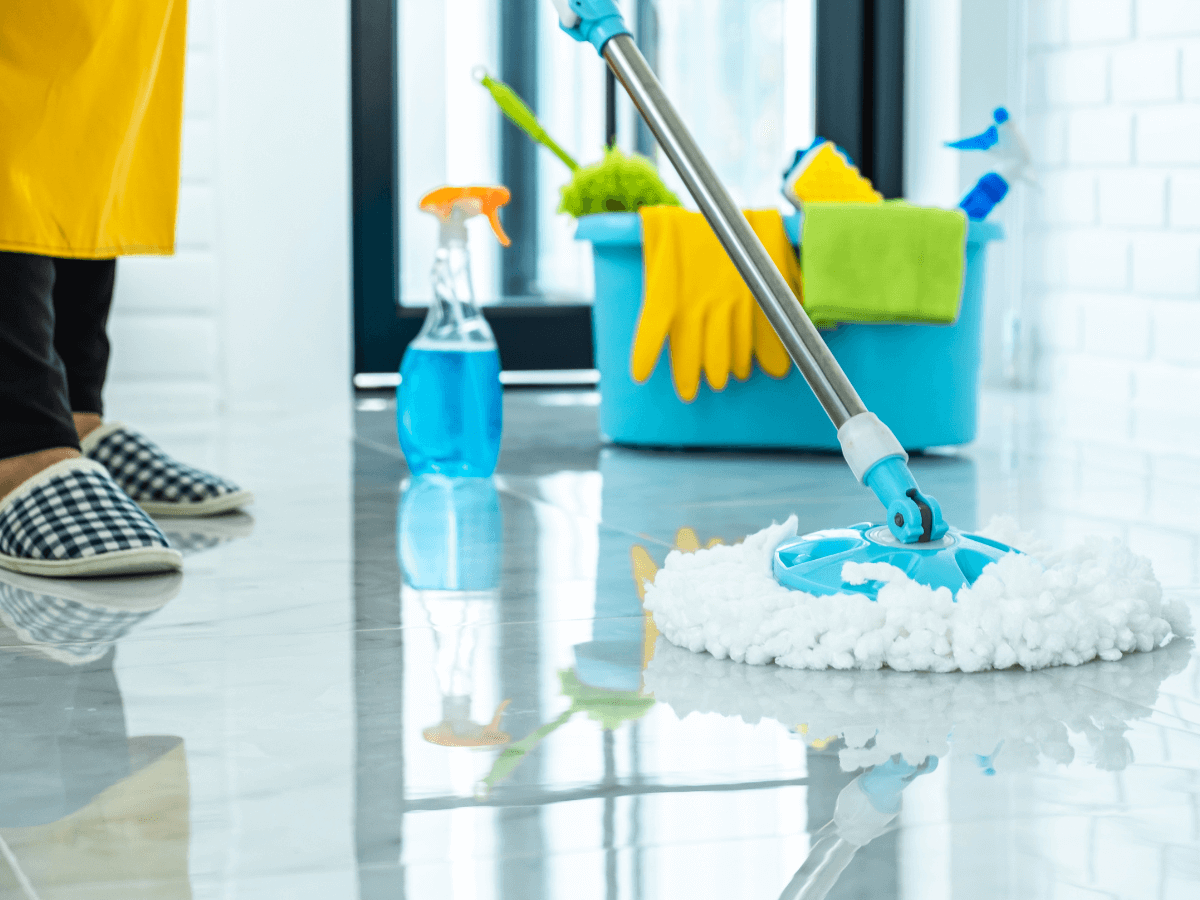
General House Cleaning 101 is an important routine that aims to maintain cleanliness and orderliness in our homes. This task involves several steps and specific cleaning techniques to ensure every corner of your house is thoroughly cleaned.
The first step is dusting, which involves using a dust cloth or a duster to remove dust particles that have settled on surfaces such as tables, shelves, and electronic equipment. Dusting regularly helps in reducing allergens and improving air quality.
After dusting, the next step is vacuuming, a crucial task in cleaning carpets and rugs. It is essential in getting rid of dust, dirt, pet hair, and other small debris, keeping your home fresh and clean.
Then, sweeping comes into the picture. This involves using a broom to clean your floors, especially those uncovered by carpets or rugs. It helps gather dust, dirt, and debris, making it easier to clean the area.
Following sweeping, mopping is another essential step in general house cleaning. Using a mop and bucket with a cleaning solution, you clean the floors, ensuring that no dust or dirt is left from sweeping. It also adds a fresh scent to your home, creating a comfortable and welcoming environment. Wiping surfaces, such as countertops, tables, and appliances, using a damp cloth and cleaning products, removes stains, dirt, and bacteria.
The last step in General House Cleaning 101 is polishing. Here, furniture, fixtures, and certain types of flooring are buffed with a special solution to bring out their shine, enhancing the overall aesthetic of the home.
This comprehensive cleaning process ensures a clean, healthy, and inviting home environment. It’s a laborious task but seeing your sparkling clean house at the end of the process is indeed rewarding.
Kitchen Cleaning 101

Kitchen Cleaning 101 covers the fundamental principles of maintaining cleanliness and hygiene in arguably the most essential area of our homes – the kitchen.
Starting with the sink, it is crucial to ensure that it’s regularly scrubbed to prevent bacteria buildup from leftover food particles. Leaving it wet could also lead to water stains, and therefore, it’s essential to always dry it after washing dishes.
Moving onto the stovetop – this requires routine cleaning due to the spills and splatters from cooking that can harden over time, making them difficult to remove. Using a specialized stove cleaner can do wonders.
When it comes to the oven, ensure that it is deep cleaned at least once every few months. Accumulated grime and grease not only affect its performance but can also lead to unpleasant, burnt smells when cooking. A natural mixture of baking soda and vinegar can work excellent for oven cleaning.
The refrigerator, on the other hand, should be cleaned out once a week. Expired food items should be removed, and the shelves wiped down to prevent odor and bacteria buildup.
Similarly, cabinets need frequent dusting and cleaning to prevent a layer of grease and dust from forming. Wiping them periodically with a mild cleaner can help maintain their cleanliness.
Finally, ensure your dishwasher is working optimally by cleaning it with a specialized dishwasher cleaner monthly. This prevents mineral build-up and keeps your dishes sparkling clean. Maintaining these practices in your Kitchen Cleaning 101 routine will not only keep your kitchen looking clean but also hygienic and safe for food preparation.
Bathroom Cleaning 101
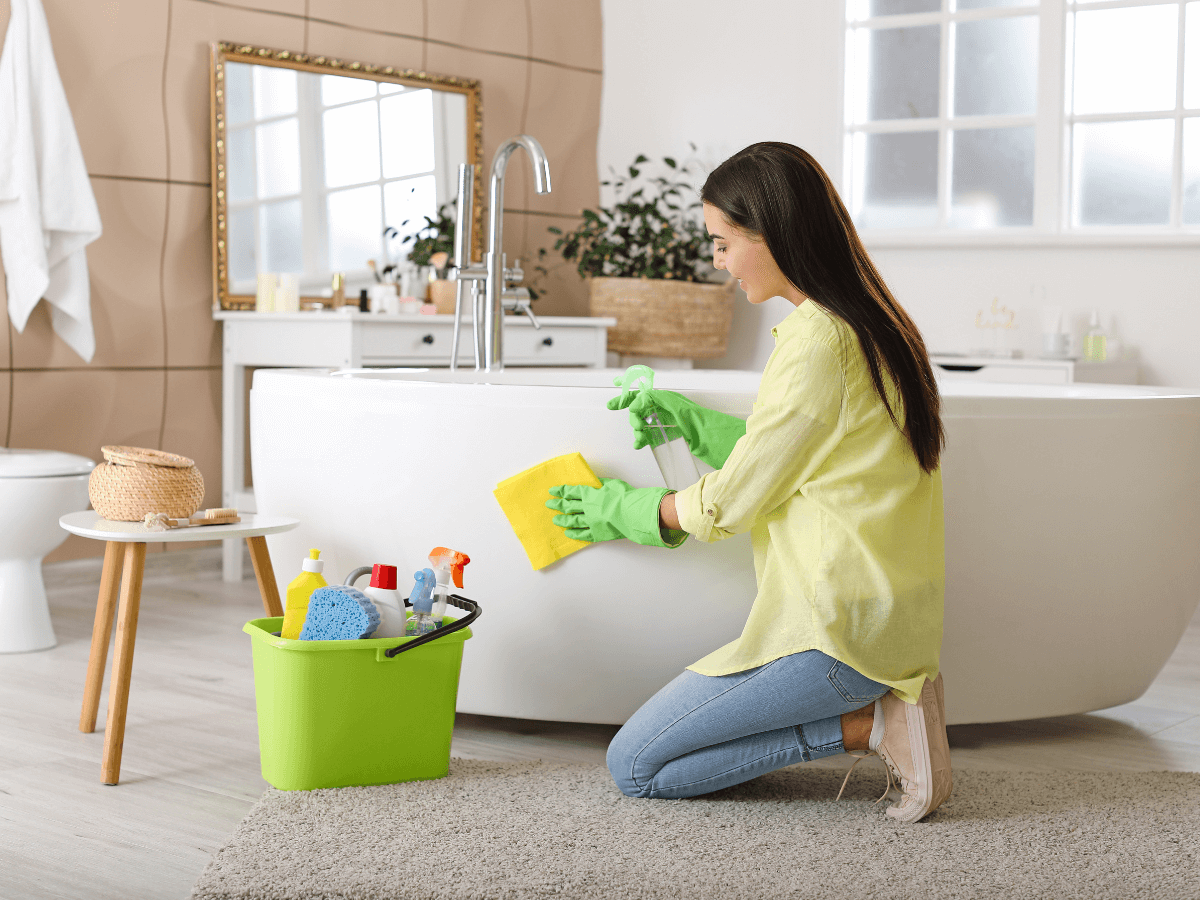
Bathroom Cleaning 101 is fundamental to maintaining a clean and healthy living environment. Irrespective of it being one of the less appealing household chores, a well-cleaned bathroom significantly eliminates germs and bacterial growth, naturally promoting wellness and proper hygiene.
To begin with, cleaning your toilet includes scrubbing the bowl clean using a good quality toilet cleaner and brush, wiping the lid, seat, base, and flush handle with an antibacterial spray or wipes.
To clean your shower, use a stiff brush and a decent cleaning solution to scrub away any scum buildup; remember to get in the grout and corners. Additionally, a daily spray after using the shower can help keep the buildup at bay.
Next is the bathtub – fill it with warm water, add some cleaning solution let it sit for fifteen minutes then scrub and rinse, ensuring it is left sparkling. The sink proves to be simpler, requiring just the use of an all-purpose cleaner and a sponge or cloth to get rid of residues and water spots.
Finally, to clean the mirror, utilize a high-quality glass cleaner and a microfiber cloth, making sure to polish it for a streak-free finish. Including these basic steps in your cleaning regimen will go a long way in making your bathroom a safer and more appealing space.
Remember, a clean bathroom contributes significantly towards the overall cleanliness of your living space.
Bedroom Cleaning 101
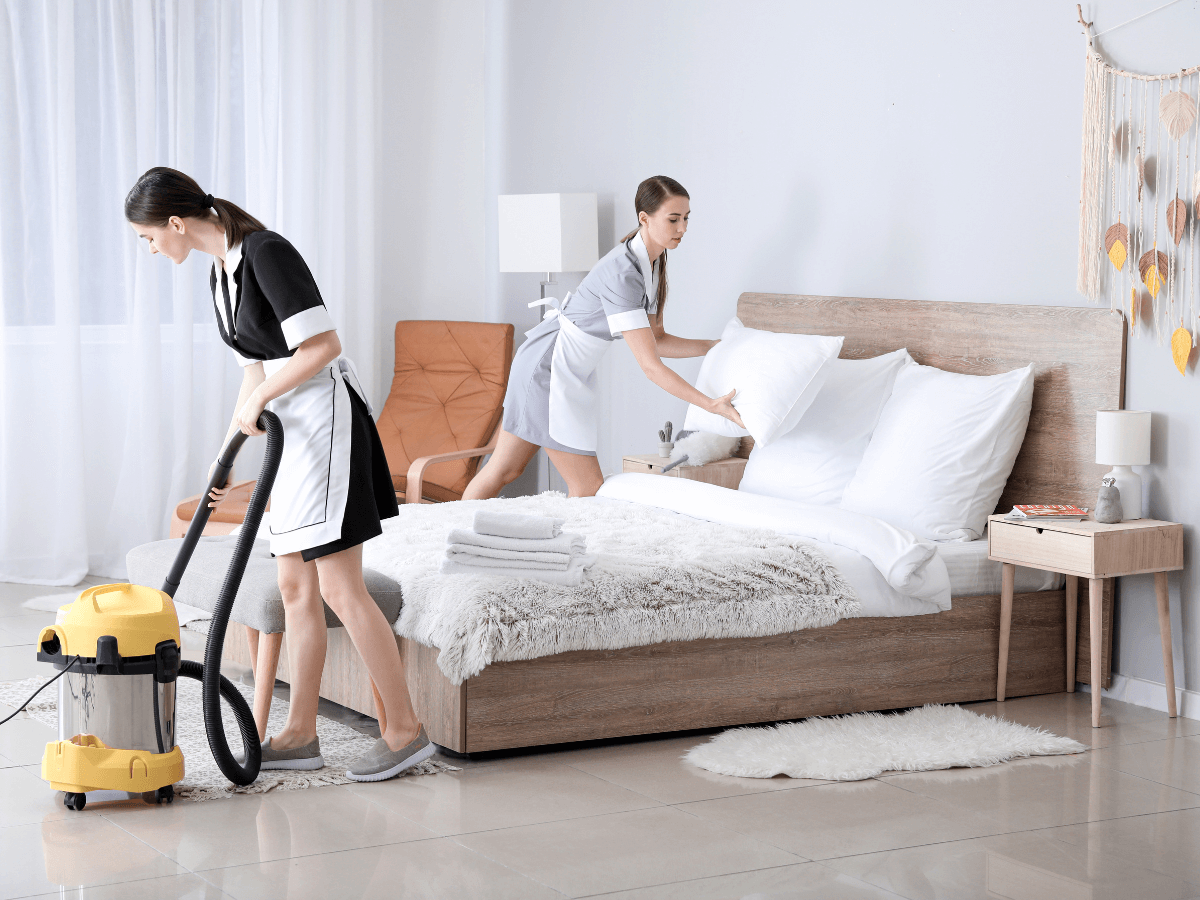
Bedroom Cleaning 101 is a basic guideline for maintaining orderliness and hygiene in your personal sanctuary. First and foremost, tidying the bed is a crucial part of any bedroom cleaning regimen. It is recommended that you change your bed linen once a week to eliminate dirt, sweat, and allergens that may accumulate over time. Stripping your bed allows you to inspect the mattress for any stains or damage and maintains the overall freshness of your sleeping space.
Next on the bedroom cleaning agenda is the closet. Regularly sifting through your closet helps you identify rarely used items that can be donated, discarded, or sold. This practice not only frees up space but also keeps your clothes in a well-organized state, making dressing up less of a chore.
Similarly, the dresser is another part that needs regular attention. A well-cleaned and organized dresser helps in efficiently locating your accessories and other stored items. Dust should be cleared from the dresser’s surface area, and its drawers should be tidied up systematically.
Lastly, don’t forget the importance of clean windows in your bedroom. They are not only the medium through which sunlight enters your room but also act as ventilation points. Regularly wiping down the windows with a suitable glass cleaning agent ensures clear lighting and also keeps germs and bacteria at bay.
In summary, Bedroom Cleaning 101 is a systematic method of maintaining clean bedrooms, with a special focus on the bed, closet, dresser, and windows. This practice guarantees a healthier and more organized living space, promoting tranquility and an improved quality of sleep.
Living Room Cleaning 101
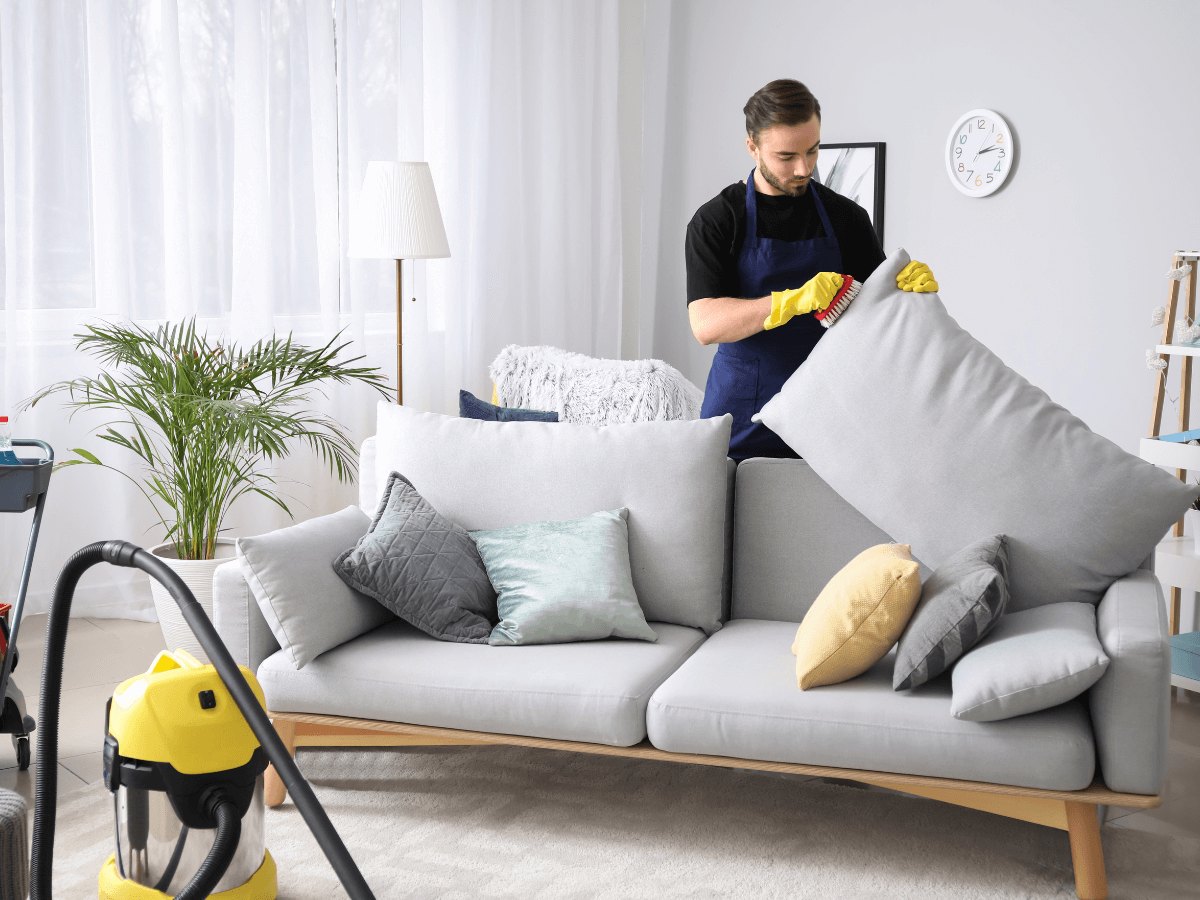
Living Room Cleaning 101 is an essential guide for maintaining cleanliness and order in one of the most frequently used spaces in the house. This starts with the upholstered furniture, which often gathers dust, grime, and allergens. Regular vacuuming, spot cleaning stains, and, when needed, deep-cleaning with a fabric-safe upholstery cleaner, will prolong the life and look of your couches and armchairs.
Secondly, the often overlooked entertainment center should be tackled, as dust can accumulate there, potentially damaging electronics and reducing their lifespan. Ensure to dust it frequently and wipe screens with a microfiber cloth to prevent scratches.
The cleanliness of carpets and rugs significantly impacts the overall cleanliness of the living room. Vacuuming should be done at least once a week or more frequently if you have pets or children. It’s recommended to deep clean your carpets and rugs at least once a year to remove embedded dirt that a vacuum can’t reach.
Lastly, bookshelves, often the repositories of more than just books, can become a significant source of clutter if not regularly maintained. Beyond dusting the shelves, take the time to sort through whatever’s on your shelves, discarding or donating items no longer needed.
In conclusion, living room cleaning is more than just a cursory dusting and vacuuming. It’s about regular maintenance and deep cleaning of upholstered furniture, the entertainment center, carpets, rugs, and bookshelves. Overlooking any of these areas can make the space appear messy and uninviting.
Keeping up with Living Room Cleaning 101 tips will make the living room a more welcoming environment for both you and your guests.
Laundry Room Cleaning 101
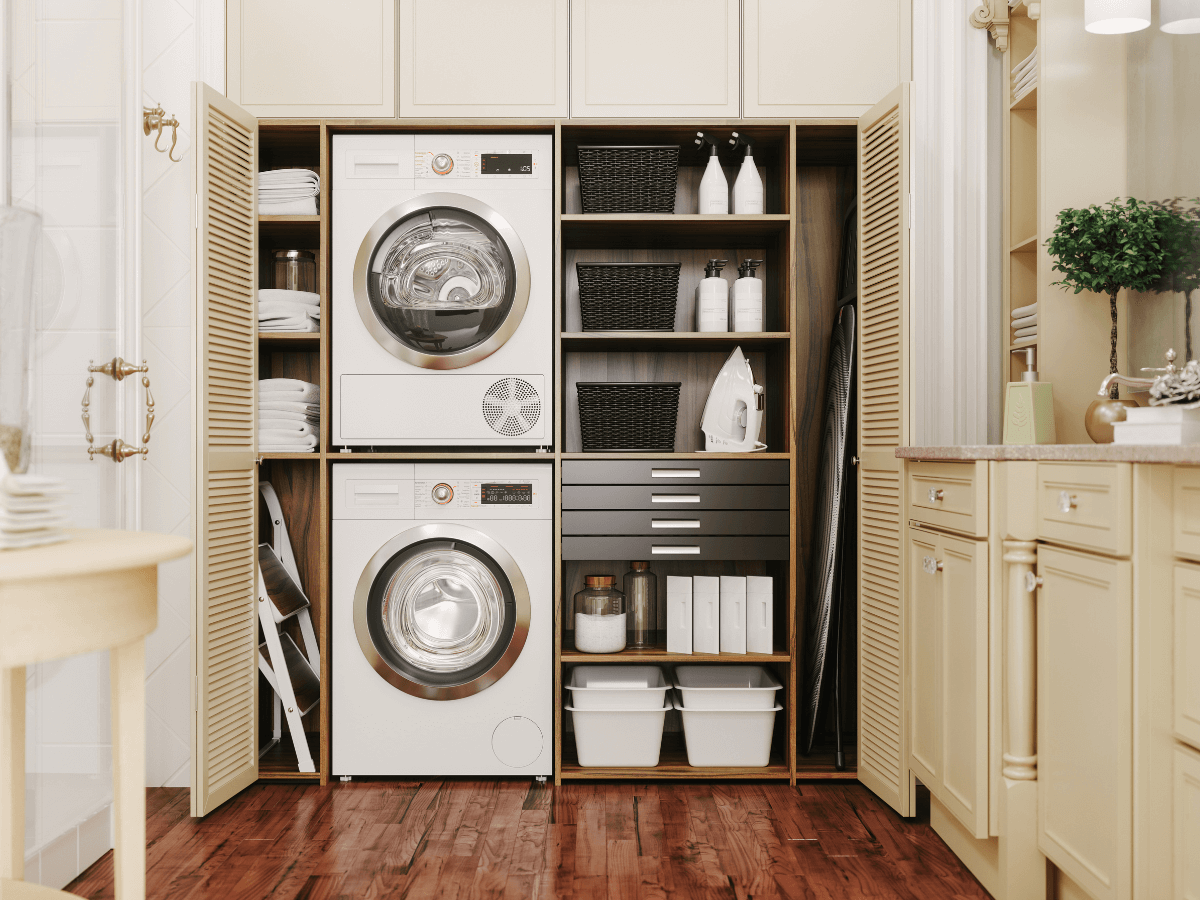
Laundry Room Cleaning 101 is a simple guide that will help you maintain a clean, efficient, and organized laundry room. Not only is cleanliness important for hygiene but keeping the laundry room tidy also helps extend the longevity of your appliances and creates a more pleasant environment for doing chores.
Let’s begin with your washer, which needs to be regularly wiped down both inside and outside to prevent mildew and unpleasant odors. It is also beneficial to run a cleaning cycle with a suitable washing machine cleaner or a mixture of baking soda and vinegar every once in a while.
Next comes your dryer—remember to clean the lint filter after every load and occasionally vacuum out the vent pipe for safety and efficiency. Too much lint buildup can lead to a less efficient appliance and potentially dangerous fire hazards. Your laundry sink should be scrubbed and sanitized regularly to remove any soap scum or hard water stains, maintaining a sparkling clean area for soaking and rinsing items.
Lastly, consider your ironing area. Wipe down your iron regularly, especially the plate, and make sure the ironing board cover is clean and free of any potential transfer stains. By paying attention to these areas and committing to regular cleaning, you can ensure your laundry room stays in top shape and functions at optimal efficiency.
Home Office Cleaning 101

Home Office Cleaning 101 is an essential guide to maintaining a clean, organized, and efficient workspace at home. The process begins with the cleansing of the central area – the desk. Properly cleaning the desk is integral to eliminating any dust or stains that might have formed over time, thus providing a clean and clutter-free space for effective work.
Moreover, cleaning the desk regularly prevents the harmful effects of bacteria or germs that might have accumulated. Next in line is the computer, the cornerstone of the home office. The cleanliness and maintenance of the computer not only enhance its efficiency but also prolong its life.
Carefully cleaning the computer screen, the keyboard, and the mouse can protect against potential damage and ensure smooth operation. Moving on, we have the filing cabinet, a haven for paper clutter. Regularly cleaning and organizing the filing cabinet not only gets rid of the dust but also ensures easy access to important files and documents.
Lastly, the shredder also demands attention. Cleaning and maintaining the shredder, predominantly by removing the excess paper waste and conducting regular service checks, keeps it in optimal condition, and ready for all the shredding needs.
In conclusion, Home Office Cleaning 101 lays down the importance of routinely cleaning and maintaining the major components of a home office to ensure a productive, organized, and healthy workspace.
Outdoor Cleaning 101
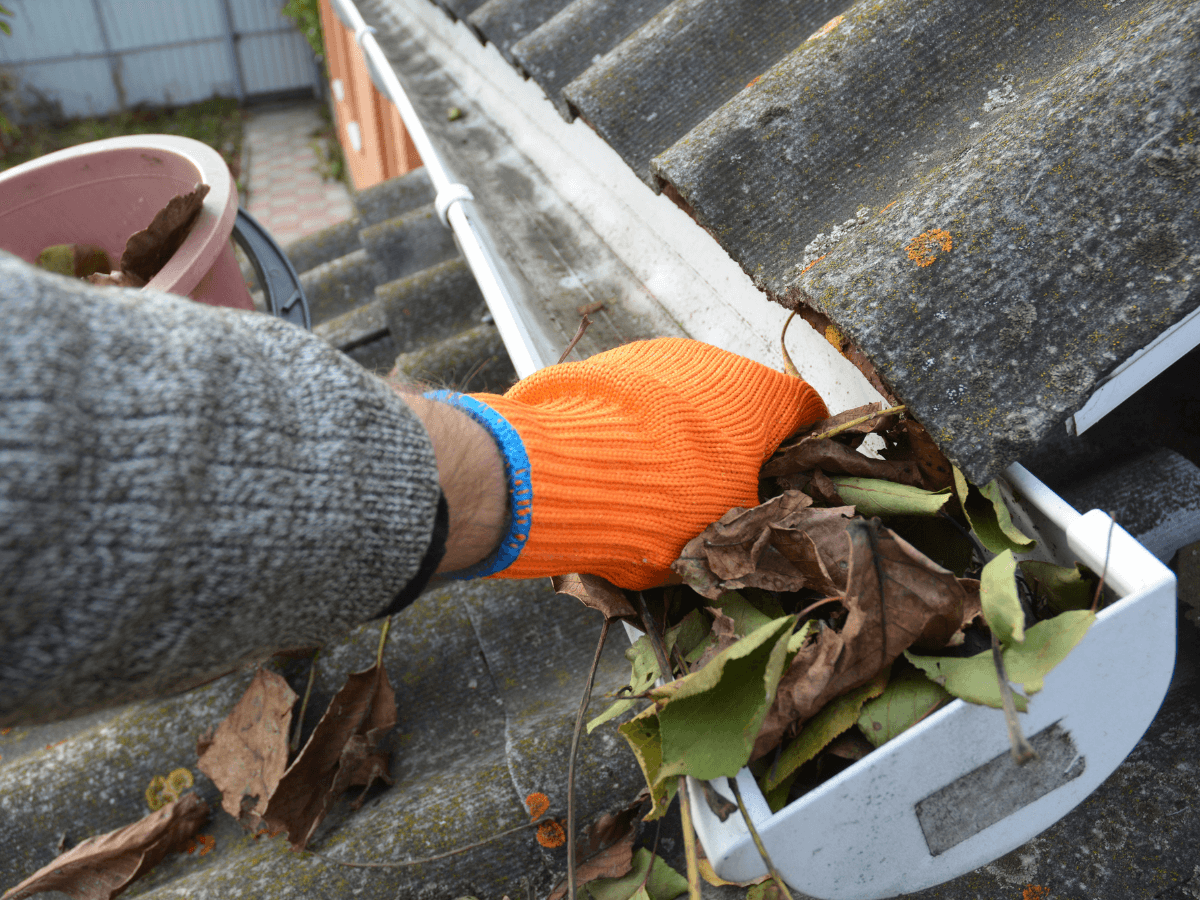
Outdoor Cleaning 101 is a comprehensive guide to help you maintain the utmost cleanliness of your outdoor spaces. The key areas to focus on include the patio, windows, garage, gutters, and driveway.
Your patio, being exposed to the elements, could accumulate dirt and grime that needs gentle but robust cleaning. A mix of warm water and a strong detergent is practical and easy to use.
Window cleaning is another essential task, especially for those who are facing the outside. They need to be cleaned regularly, both inside and out, using a window cleaning solution and a squeegee to provide a streak-free finish.
The garage often becomes a dumping ground for items that don’t quite have a place inside the home. Regular decluttering, dusting, and sweeping can keep the garage tidy.
Gutters play a crucial role in the overall health of a house’s exterior. Blocked gutters can cause water to spill down walls and into the foundation, causing damage. They need to be cleaned out frequently, especially during autumn when leaves are prone to clog them.
Lastly, the driveway should also not be forgotten. Oils or other residue can make the driveway dirty, and pressure washing can be an effective solution. Remember, a clean home exterior not only adds to its aesthetic appeal but also contributes to its longevity.
FAQs
Q: What is “House Cleaning 101”?
A: “House Cleaning 101” refers to the basic instructions or guidelines that help anyone become efficient and effective in cleaning their homes. It involves valuable cleaning tips, a consistent cleaning routine, the right cleaning supplies, and a checklist to make sure every part of the house is covered. This guide aims to make house cleaning more manageable and less overwhelming.
Q: How does a house cleaning checklist help me?
A: A house cleaning checklist plays a crucial role in ensuring that you don’t miss any parts of your house that need cleaning. By following a checklist, you can systematically manage your tasks and make the job more efficient. It ensures that every cleaning is deep and thorough. Professional cleaners recommend having a checklist—printable or digital.
Q: What is the right way to clean my house from top to bottom?
A: Cleaning the house top to bottom means starting from the uppermost level of your house or room—like the ceiling fans, lighting fixtures, and blind—to the lower areas like skirting boards and floors. This strategy is effective as the dust from above falls on the lower surfaces, which will be cleaned last.
Q: Can I engage a professional cleaning service for house cleaning?
A: Yes, if you prefer, you can engage a professional cleaning service. They use professional-grade cleaning supplies and follow a detailed house cleaning checklist to make sure each part of your home gets properly cleaned. However, remember that this will be more costly than doing the job yourself.
Q: How to create a cleaning schedule?
A: A cleaning schedule can be daily, weekly, or monthly, depending on your household’s needs. This schedule includes every cleaning task and when each should be done. Regular cleaning routines for simple tasks and scheduling deeper cleanings at least once a month make your tasks more manageable. Room-by-room, day-by-day cleaning schedule will help to minimize the overwhelming feeling of house cleaning.
Q: What cleaning products do I need in my cleaning checklist?
A: Your cleaning checklist should include cleaning supplies like a vacuum cleaner for carpets and hard-to-reach areas, disinfectants to eliminate pathogens, a microfiber cloth for dusting, and cleaning solutions suitable for different surfaces like countertops, bathrooms, and floors. Remember, sharing your home with pets or babies might require specialized cleaning products.
Q: How important is decluttering in house cleaning?
A: Decluttering is a crucial part of house cleaning. It means organizing and getting rid of unnecessary items from your home that can contribute to mess and clutter. By decluttering, you create more space and reduce the areas where dust and dirt can accumulate. Decluttering should be a part of your cleaning routine and can be done before actual cleaning.
Q: How often should I deep clean my house?
A: Deep cleaning is a thorough process where usually overlooked areas of the house are scrubbed and cleaned. This includes cleaning inside appliances, under the furniture, and more. Professional cleaners recommend deep cleaning at least once or twice a year. However, homes with high traffic, young children, or pets might require a quarterly deep clean.
Q: Are there any particular attachments for vacuum cleaners to clean hard-to-reach areas?
A: Yes, most vacuum cleaners come with a variety of attachments designed to clean hard-to-reach areas. These usually include long, narrow nozzles, a brush for dusting, and an attachment for pet hair. Check your vacuum cleaner’s user guide for detailed instructions on using these attachments.
Q: How does a cleaner make sure to clean every single part of the house?
A: This is where your detailed house cleaning checklist comes into play. By following the checklist and working methodically through each room, you ensure that every corner of your house gets the attention it needs. The checklist should cover all areas, including clothes, toilets, and closets. This way, you avoid forgetting any part of your house and ensure a complete clean every time you clean.
Final Words
A thorough understanding of house cleaning goes beyond a quick sweep and wipe down of surfaces. It entails an array of tasks that mold each room in your home into a desirable living space. In General Cleaning, every nook and cranny of your home deserves attention, which includes dusting, vacuuming, mopping, and much more.
Kitchen Cleaning, a noteworthy aspect, requires regularly sanitizing countertops, promptly cleaning spills, and organizing pantry items to ensure a tidy and healthy cooking environment. Bathroom Cleaning is crucial and includes sanitizing high-touch areas, scrubbing bathtubs, and frequently washing floor mats.
Bedroom Cleaning, on the other hand, involves changing and washing linens, dusting furniture, and vacuuming carpets. The Living Room is an area that accumulates a significant amount of dust and clutter and, as such, demands systematic cleaning of upholstery, furniture, and electronics.
The Laundry Room plays a pivotal role in maintaining the cleanliness of your home, thus, ensuring all appliances are spotless and in top-performing condition is essential. A Home Office should remain organized and free from dust and clutter to promote productivity.
Finally, Outdoor Cleaning like maintaining the yard, decluttering the patio, and cleaning outdoor furniture is just as important. Bear in mind that cleaning is not a one-time task, but a continual process that helps maintain a pleasant and healthy living environment.

